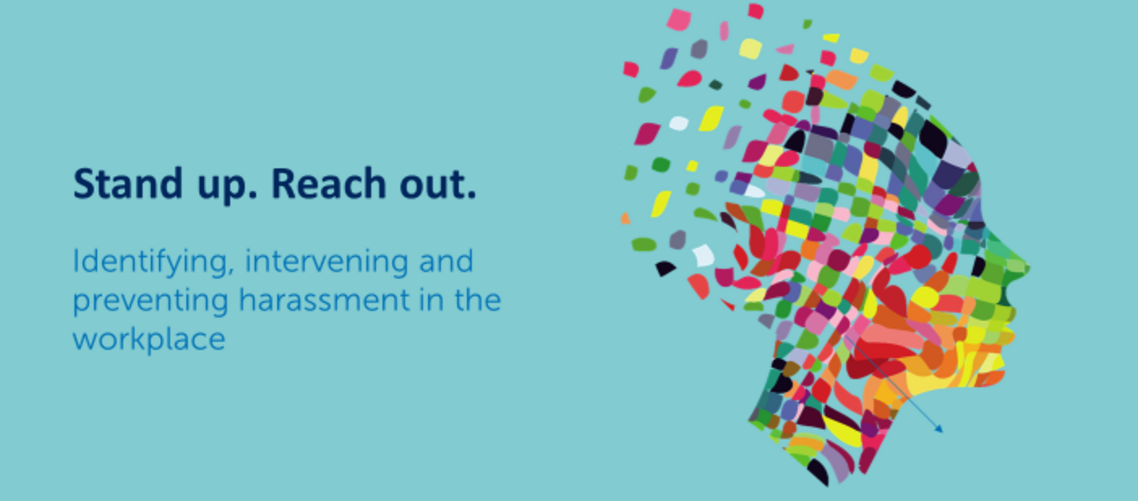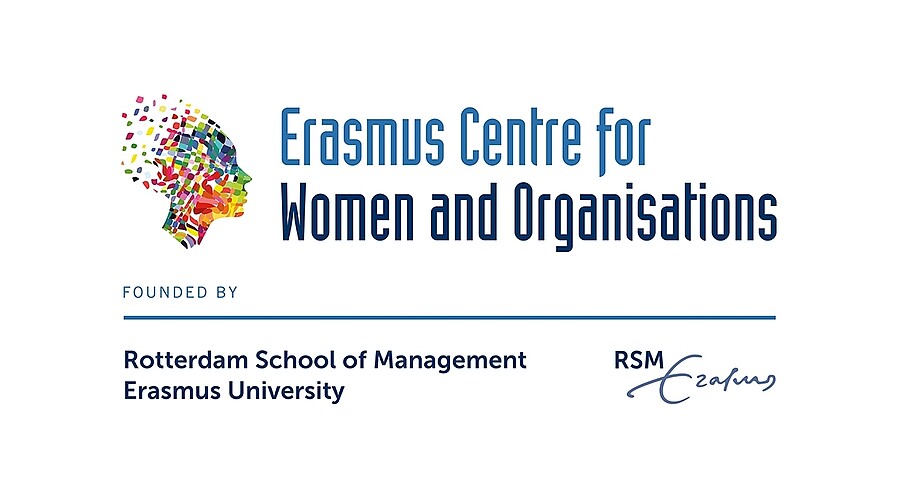Originally posted on 3 February 2021
ECWO has developed the Stand Up. Reach Out workshop to address harassment from the perspective of the individuals involved and the participant’s ability to productively intervene. The workshop is facilitated by Professor Hanneke Takkenberg and Dr Natalie Cleton, who writes below about why we have to stand up and reach out against workplace harassment.
Recent studies show that workplace harassment is commonplace (1-6). In academia, for example, a staggering 42% of Dutch academics report being exposed to workplace harassment (1). The consequences for victims can have life-lasting impact. Insomnia, physical illness (like stomach problems), back problems and headaches as well as panic attacks, depression and post-traumatic stress syndrome are reported (2, 7, 8). The impact on the company performance consists of decreased work enjoyment and increased sick leave, which both have economic consequences (7). Creating a safe work environment is therefore not only a legal and moral responsibility but also of economic concern to the employer.
Harassment is defined as follows: ‘Where an unwanted conduct occurs with the purpose or effect of violating the dignity of a person, of creating an intimidating, hostile, degrading, humiliating or offensive environment’ and can consist of single as well as continued events (9). There are many types of harassment, with sexual harassment being the one that currently comes to mind due to the #METOO movement which has been widely report in the media since 2017. A single case of sexual harassment can have lasting consequences for the mental and physical health of an employee. However, there are many ways harassment can occur. Among these are psychological harassment (like intimidation), degrading people and exclusion, discriminatory harassment based on sex, age, sexual preference or culture, and power harassment in which the power difference is used as leverage to over-demand work or invade personal time (10). In academia, academic sabotage is a common harassment type. Here people are excluded from authoring papers, are refused access to scientific material and excluded from meetings or events (11).
Sometimes people wonder why so many victims don't stop the harassment themselves. First of all, victims of harassment are very hesitant to label behaviour as harassment. They often look for reasons within themselves to explain why they are being exposed to certain behaviour. These include stating that they are oversensitive, misunderstood the behaviour, that someone is “just having a bad day”, that they deserve the treatment or that “this is just the culture” which they must accept or leave (11).
Helping victims to correctly identify situations as being harassment is the first step in standing up and reaching out against workplace harassment.
Secondly it is important to empower individuals to be able to stand up and reach out. This is because reporting harassment behaviour can lead to retaliation and condemnation by superiors and co-workers. The reporting itself can be stressful, leading to physical and mental effects (12). Reporting and other interventions by victims and bystanders require a safe work environment and anonymity.
This condemnation of the victim might lead to a double victimisation. A study into the condemnation of passive victims states that, by remaining passive, they "may unknowingly set themselves up for condemnation by others who perceive the victim’s passive response to sexual harassment as weakness. Such condemnation adds to the victim’s already heavy costs (psychological and physical harm). Passive victims become victims twice over, bearing the costs of the harassment as well as the costs of condemnation by coworkers who observe the harassment and the victim’s passive response to it." (12) So, colleagues often feel that victims should speak up for themselves, and thus (implicitly) believe that they have a responsibility in ending the harassment. But: since when is it the responsibility of a victim to end the wrongdoing against her?
Expecting the victim to stop the harassment makes the victim responsible for the perpetrator’s behaviour. If victims often have good reasons for not speaking up themselves, and if asking them to do so puts a double burden on their shoulders, doesn't that mean that it is up to colleagues to speak up? One way a professional organszation could help organise this is to facilitate more understanding of a victim's passivity. But how do we do that? The aforementioned study shows "that people who recalled an experience of being intimidated in the workplace when they took no action against the intimidation evaluated the passive sexual harassment victim more positively even though the recalled situation was not the same as that experienced by the victim." (12) So we could start by letting professionals understand that at moments when they were intimidated they too had reasons to remain passive and not to speak up.
Witnesses to the harassment also use many justifications to remove the responsibility of intervening. They are less likely to help those victims they perceive as responsible for their own situation – perhaps because they are adults or capable of intervening themselves. We tent to overestimate the extent to which we would react in such a situation (12). Our reactions can be affected if we don’t identify with our colleague’s situation or they do not belong to the right ‘in-crowd’. Additionally, if there are many witnesses we place responsibility for intervention on other bystanders. We feel less inclined to help victims in large crowds. If there are many witnesses, this defuses the sense of responsibility to intervene. This concept is called the bystander effect (13).
Standing up again workplace harassment and reaching out to the victims is a responsibility of the bystanders and of the company as a whole. And there are many ways which that this can be achieved. Key elements of this are having a clear institutional policy on harassment and education on what is considered harassment as well as by creating safe and anonymous reporting systems with independent members. The responsibility of bystanders to intervene is essential to the success of tackling workplace harassment – and there are many ways to intervene that donot always require a bystander to directly confront the harasser themselves.
The Erasmus Centre for Women and Organisation (ECWO) offers a half-day workshop on tackling workplace harassment which focuses not only on the role of the company but mainly on what you as a bystander can do to stand up and reach out against workplace harassment. Please contact ecwo@rsm.nl if you’d like to learn more about this aspect of ECWO’s work.


